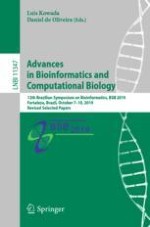2020 | OriginalPaper | Buchkapitel
A Clustering Approach to Identify Candidates to Housekeeping Genes Based on RNA-seq Data
verfasst von : Edian F. Franco, Dener Maués, Ronnie Alves, Luis Guimarães, Vasco Azevedo, Artur Silva, Preetam Ghosh, Jefferson Morais, Rommel T. J. Ramos
Erschienen in: Advances in Bioinformatics and Computational Biology
Aktivieren Sie unsere intelligente Suche, um passende Fachinhalte oder Patente zu finden.
Wählen Sie Textabschnitte aus um mit Künstlicher Intelligenz passenden Patente zu finden. powered by
Markieren Sie Textabschnitte, um KI-gestützt weitere passende Inhalte zu finden. powered by
